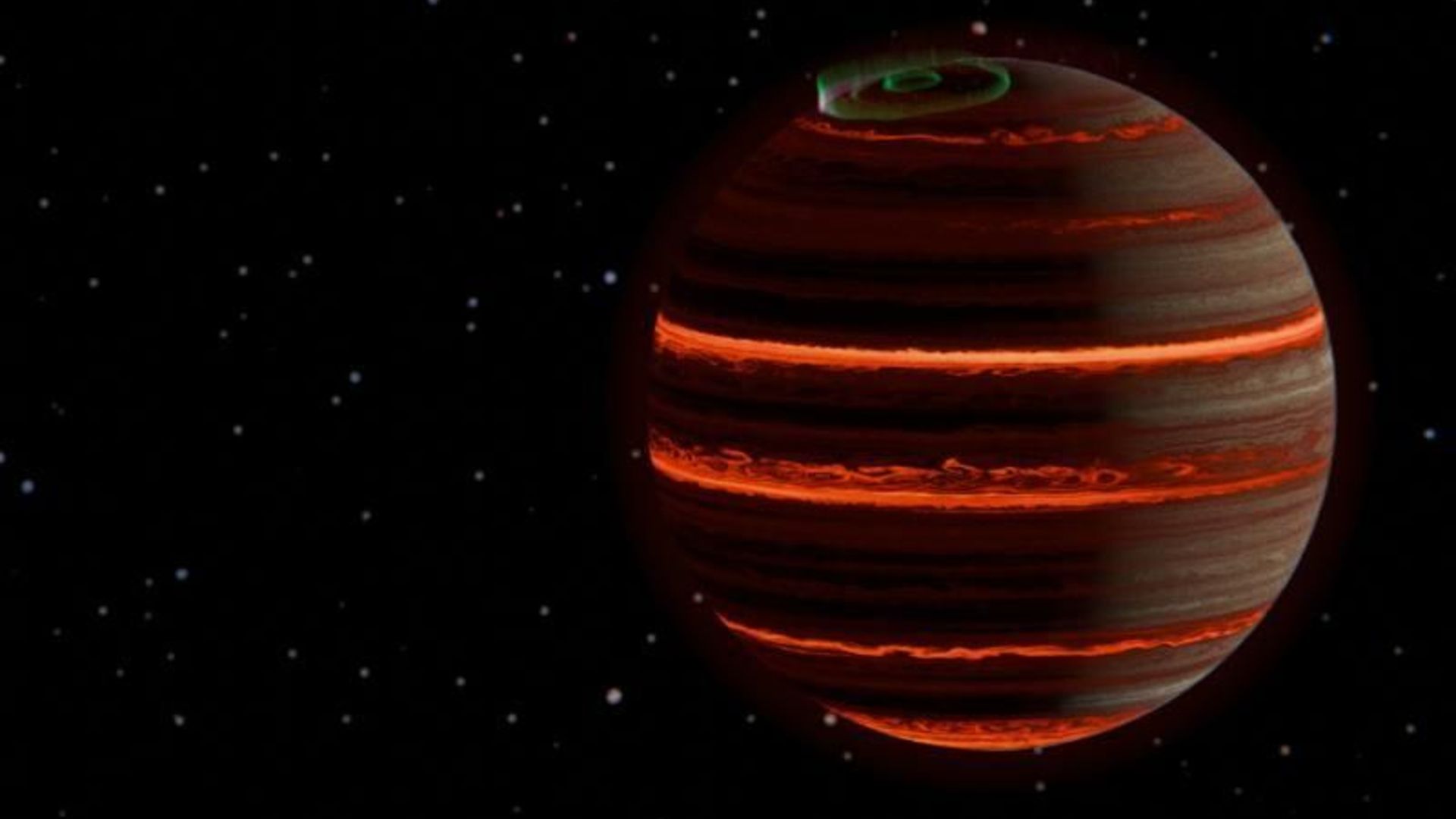🌩️ Discover the weather forecast of a failed star
Follow us on Google News (click on ☆)
This celestial body named SIMP-0136, located about 20 light-years away in the constellation Pisces, represents an intermediate category between planet and star. Astronomers classify it as a brown dwarf, an object that formed from the collapse of gas clouds but whose mass remains insufficient to trigger nuclear fusion of hydrogen in its core. Approximately 200 million years old, this wandering object rotates on its axis in just two and a half hours while drifting freely through interstellar space.

Auroras on the wandering world SIMP-0136 heat its upper atmosphere according to observations from the James Webb Space Telescope.
Credit: Evert Nasedkin/Trinity College Dublin
Thanks to the exceptional capabilities of the James Webb Space Telescope, scientists have been able to establish the most detailed weather forecast ever made for this type of celestial object. The study published on September 26 in Astronomy & Astrophysics represents the first direct observation of atmospheric variations of a brown dwarf during its complete rotation. The telescope's hypersensitive instruments captured minute brightness changes allowing mapping of different atmospheric layers with unprecedented precision.
Contrary to researchers' expectations who thought they would observe irregular clouds, the study reveals that SIMP-0136's clouds, composed of hot silicate grains similar to sand, show remarkable stability. The real surprise lies in the upper atmospheric layers where scientists discovered a zone overheated by about 300 degrees Celsius (572°F) above theoretical predictions. This exceptional heating would be caused by intense auroral activity.
The mechanism of auroras on SIMP-0136 differs fundamentally from that observed on Earth. While our auroras result from the interaction between charged particles from the solar wind and our magnetic field, the brown dwarf possesses a considerably more powerful magnetic field. This intensity amplifies the phenomenon to the point where energetic particles, colliding with the atmosphere, not only produce intense luminescence but also transfer enough energy to significantly heat the upper atmospheric layers.
The James Webb Telescope observations also detected subtle thermal variations, less than 5 degrees Celsius (9°F), in the deeper atmospheric layers. These slight fluctuations could correspond to immense storm systems analogous to Jupiter's Great Red Spot moving across the surface during the object's rotation. Brown dwarfs like SIMP-0136 offer privileged observation conditions because they are not dazzled by the proximity of a parent star, thus allowing the study of atmospheric phenomena that might also exist on giant exoplanets.
Brown dwarfs: these "failed" stars
Brown dwarfs occupy a unique position in the catalog of celestial objects, situated at the boundary between giant planets and stars. Their formation begins like that of stars, through the gravitational collapse of an interstellar gas and dust cloud. However, their mass remains insufficient, generally between 13 and 80 times that of Jupiter, to reach the critical threshold allowing stable hydrogen fusion into helium.
Unlike stars that shine thanks to nuclear reactions in their core, brown dwarfs mainly emit residual heat from their gravitational contraction. During their existence, they gradually cool down, going from temperatures that can reach 2,000 degrees Celsius (3,632°F) for the youngest to a few hundred degrees for the oldest. This thermal evolution directly influences their spectral classification.
Their atmosphere presents particular characteristics with the formation of clouds composed of vaporized minerals. In the hottest brown dwarfs, clouds of iron and silicates are observed, while in the coldest ones, clouds of water and ammonia appear. These cloud structures create patterns on the surface, similar to the weather systems of giant planets.
Brown dwarfs constitute natural laboratories for studying atmospheric phenomena under extreme conditions. Their study helps scientists develop models to understand the atmospheres of giant exoplanets, particularly those that orbit far from their host star and present comparable thermal conditions.